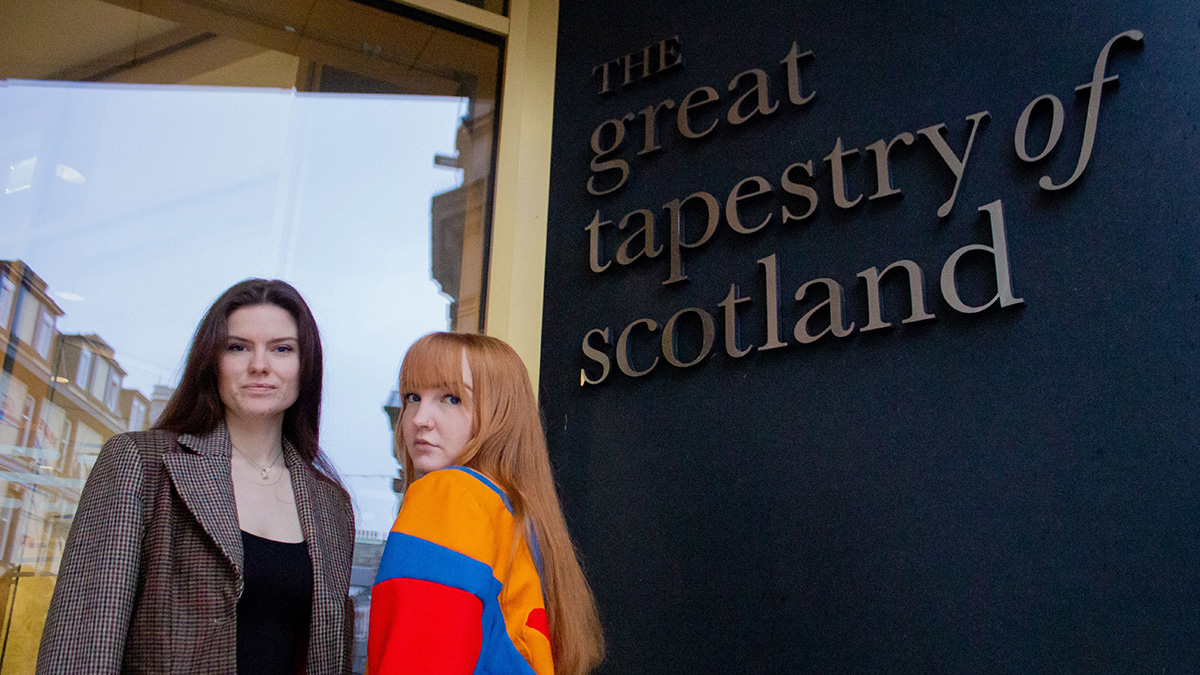Published:

Clothing made with ocean waste, jackets tailored from landfill material and a fire extinguisher reborn as a lamp are among the exhibits to be showcased in a new free Scottish exhibition about how the design industry could help combat climate change.
Staged by staff and students at Heriot-Watt University's world-renowned School of Textiles and Design in the Scottish Borders, the exhibition is called Metamorphosis and opens at The Great Tapestry of Scotland visitor centre in Galashiels on Tuesday 17th January 2023.
The repurposing of old fishing nets, ripped up and remade discarded fashion and other collected waste materials including hospital curtains, window dressing fabric, metal, wood and fibre within the show explore how materials might be re-imagined. The explorations will literally ‘metamorphose' with a new display every two weeks, until 31st March 2023.
A lot can be learned from using what we as society class as waste within creative projects.
The five stages of the exhibition are titled ‘Polished Pieces,' ‘Deconstructed,' ‘New Ideas,' ‘New Resources' and ‘Speculations.' Polished Pieces includes items made with recycled or regenerated materials. Deconstructed, opening on 31st January, explores sustainable methods of designing and making products and garments, including manufacturing processes and design that addresses social issues. ‘New Ideas' and ‘New Resources,' starting on the 14th and 28th of February, will look at alternative ways of viewing waste materials and the opportunities this offers to designers.
The final display, ‘Speculations,' from 16th of March, will explore new areas of research and interest, and will include workshops which encourage local communities to rethink the nature of waste material.
Welcoming the exhibition, Sandy Maxwell-Forbes, Centre Director for The Great Tapestry of Scotland said: “We're delighted to be the first to host the important Metamorphosis exhibit in partnership with one of the most prestigious textile and design schools in the world, based right here in our hometown of Galashiels.
“There is only one earth and as we all begin to see the devasting impacts of climate change, we must all do all we can to inspire and equip everyone to do all they can to protect it and the communities in which we live.”
The fashion industry (clothing and footwear) produces more than 8% of greenhouse gases and 20% of global wastewater annually, according to the United Nations.
Dr Lucy Robertson, Assistant Professor of Design at Heriot-Watt's School of Textiles and Design, said: “Understanding material qualities and properties is imperative for designers. Although the ultimate aim is to eliminate waste, a lot can be learned from using what we as society class as waste within creative projects. This exhibition asks us to reflect on how we view waste as a material – and reconsider its value.”
Exhibitors in the show include Adele Davidson, a fourth year Design for Textiles student at Heriot-Watt who specialises in knitted textiles and has used ocean waste to create fashion garments. Second year fashion students Bethany Whitaker, Mariana Finlyson, Freya Gillanders, Caragh Welsh and Sasha MacAulay found, deconstructed and remade tailored jackets that were destined for landfill.
Qinrui Yang, a final year fashion student from China, used salvaged waste wool in clothing designs based on her childhood experiences as a twin.
The exhibits in the Metamorphosis exhibition include a ‘sweet shop' of jars filled with waste materials, including wire, wool, metal mesh, plastic strips, fabric, wood offcuts and chandelier beads.
Dr Euan Winton, an Assistant Professor of Design at Heriot-Watt's School of Textiles and Design, is exhibiting a discarded fire extinguisher that he has transformed into a distinctively graphic lamp. Other exhibitors include Kenoteq, a Scottish clean tech spin-out from Heriot-Watt University that has developed a brick made from recycled construction waste.
Other design projects will outline how these environmental practices are informing the design focus for the future of the School of Textiles and Design, outlining a commitment to community, engagement, education and empowerment in the years to come.
The Metamorphosis exhibition will be displayed in the Great Tapestry of Scotland's Gallery 1420 and will include a series of guest lectures.
Heriot-Watt School of Textiles and Design dates back to 1883, when classes in weaving, dyeing and chemistry were introduced to train workers for the local textiles industry.
The School is a centre of excellence in design, with Honorary Graduates including British fashion icon Dame Vivienne Westwood. It is based on Heriot-Watt's Scottish Borders Campus, which is built around a historic mill in Galashiels, at the heart of Scotland's luxury textile industry.
Manufacturers in the Scottish Borders include Barrie, one of Scotland's oldest cashmere knitting manufacturers, which was acquired in 2012 by French luxury fashion house Chanel.
The Great Tapestry of Scotland visitor centre was purpose-built to house The Great Tapestry of Scotland, one of the world's largest community arts projects.
Hand-stitched by a team of 1,000 stitchers from across Scotland, The Tapestry charts 420 million years of Scotland's history, heritage, innovations and culture through 160 compelling panels. It was the brainchild of globally-renowned author Alexander McCall Smith and designed by artist Andrew Crummy, based on a narrative written by Scottish Borders-based award-winning writer and historian Alistair Moffat.